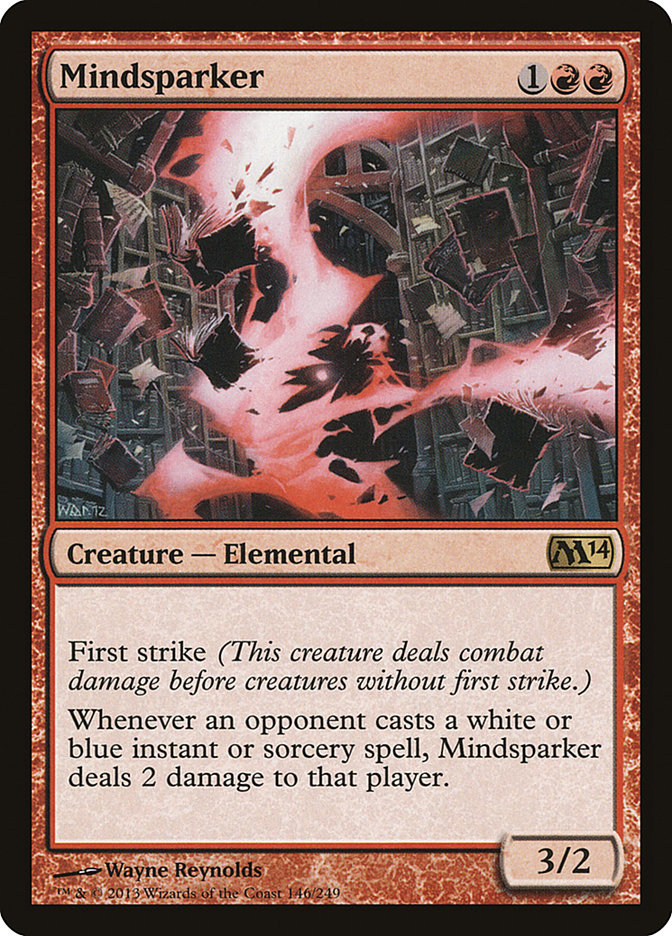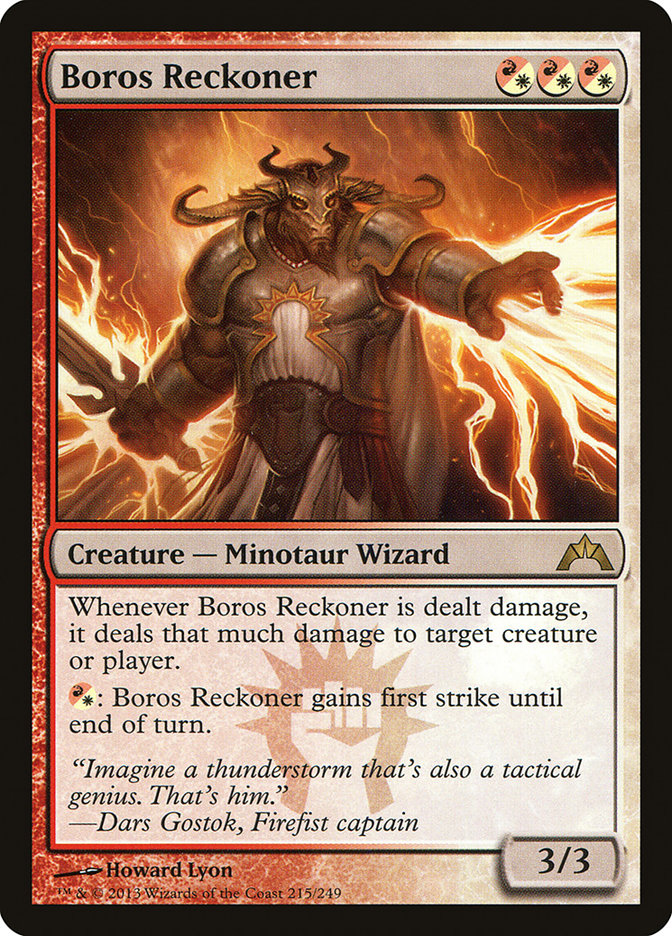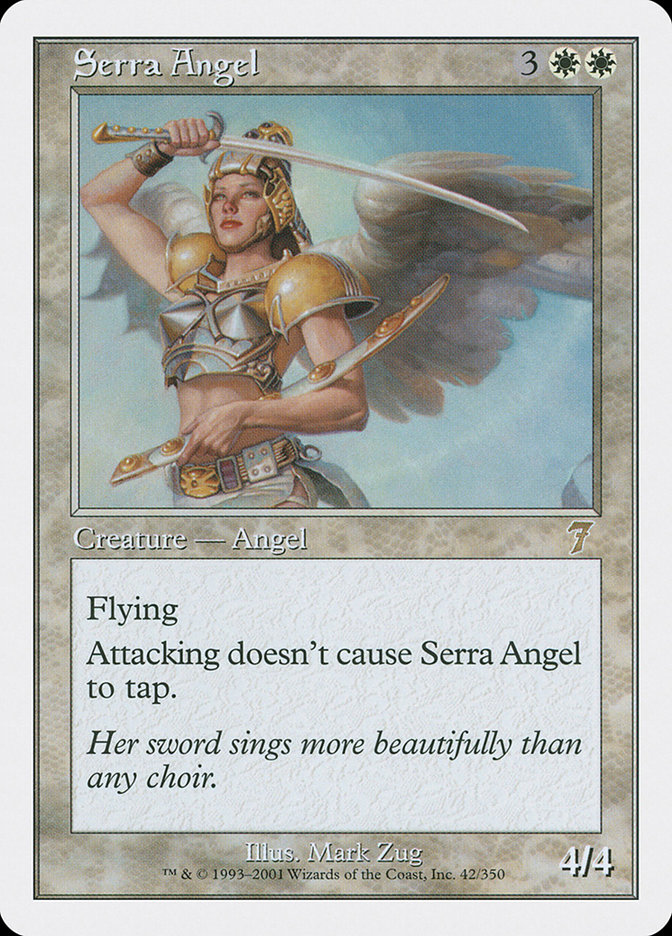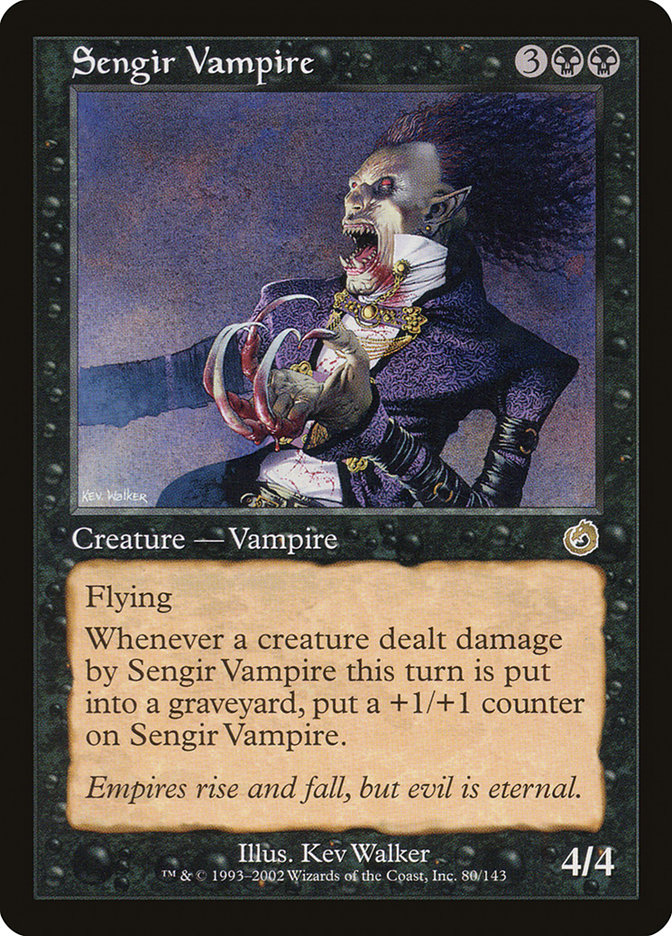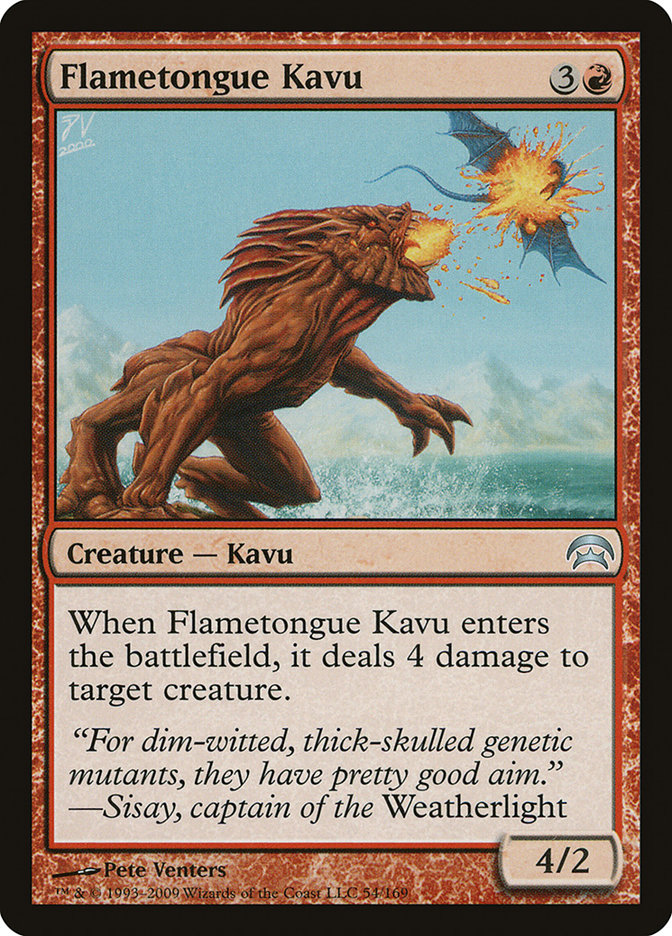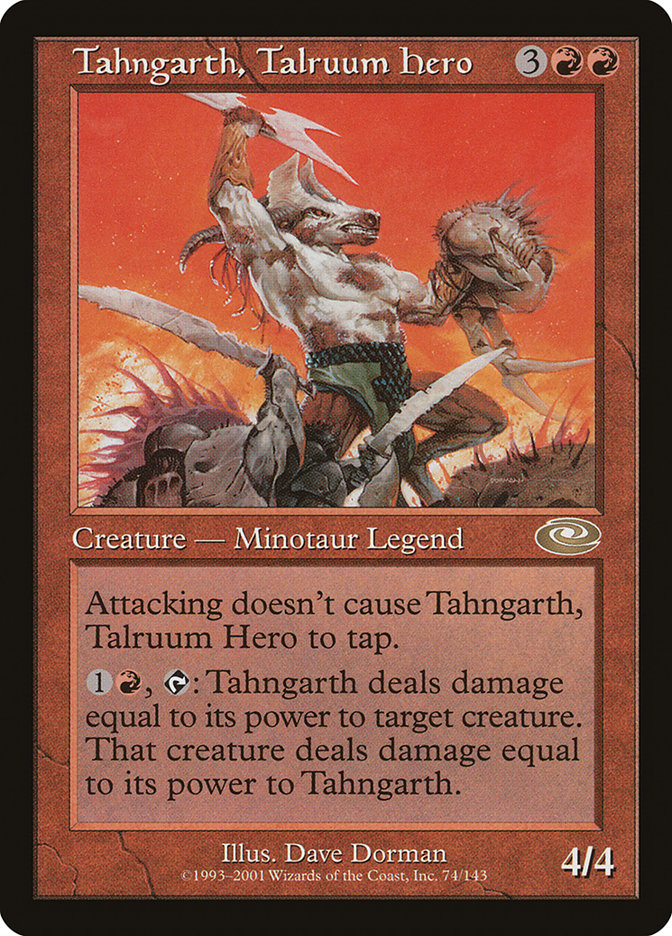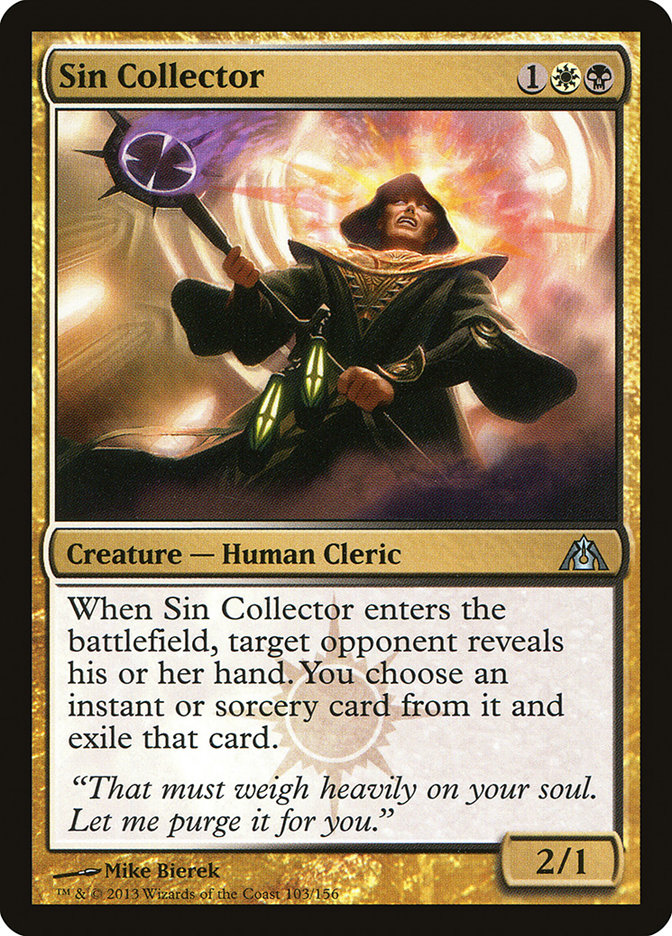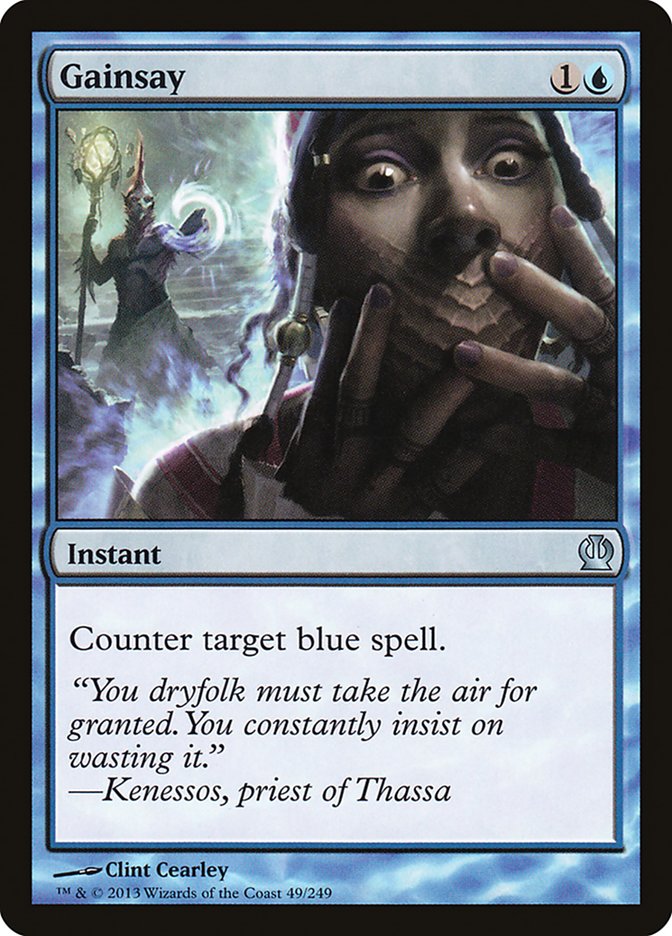We’re getting into some mighty strange times when it comes to Magic.
The most exciting time to me is when a new set is going to cause a rotation in the Standard format. Journey into Nyx is not going to be doing any of that. Journey into Nyx is likely to shake things up—that’s for sure—but when I say we’re heading into “strange times,” what I mean is that we’re in that weird moment where we don’t have the full spoiler for the set, so we can’t completely delve into new decks and the changes of old decks and yet there is still a little bit of time left before the change, meaning old decks still matter (particularly if you are going to SCG Open Series: Detroit)!
You might be thinking to yourself, "But Adrian, there are plenty of new decks to be brewing with."
This is undoubtedly true, and I’ve already started doing that (hello, Prophetic Flamespeaker). But the truth of the matter is that when cards are spoiled, they only have use in a context. Let’s take a look at a great example of this:
Back when M14 was released, people were going crazy over Mindsparker. I was definitely a spoilsport on the card, calling it “wildly overrated” and prompting a negative response from some people who wondered what in the hell I was looking for. Well, the truth of the matter was that Mindsparker existed in the format at the same moment as this guy:
Sometimes cards just outclass other cards.
When these cards were reprinted in 2001 and 2002, there were people who thought they were going to make a big splash. Unfortunately, we were still living in the time of this card:
Flametongue Kavu was just so good that it warped what was even possible to play. With Flametongue Kavu in the format, it wasn’t at all reasonable to play any card that cost four or more mana that a Flametongue Kavu could kill (other than Flametongue Kavu of course). If you were going to bother, whatever you were playing had to just take over the game or otherwise not care about dying.
If you look at the Masters Event (a now defunct tournament series that featured the Top 32 players of the time, with 32nd place being a thousand dollars), here are the total count of cards that fail to meet The Flametongue Criteria:
2 Thieving Magpie
3 Mystic Snake
11 Skizzik
Magic historians might enjoy looking at all 32 decklists. It’s still pretty shocking to think that these are the only creatures that were played out of 1,920 cards in maindecks that would simply die to a Flametongue.
Frustratingly, for deckbuilders like me and Sol Malka, in the same set as Flametongue Kavu was another card that would have been incredible if Flametongue Kavu simply didn’t exist:
This early fighter could have blown the world open. But . . .
Flametongue Kavu : Tahngarth, Talruum Hero : : Mindsparker : Boros Reckoner
Flametongue Kavu was so good that it was ubiquitous and just became "FTK" to basically everyone. Hell, the card was so good that William Jensen included it as the only creature in his successful Battle of Wits deck. (Oh Huey, is there anything you can’t do?)
Creatures (4)
Lands (92)
Spells (148)
- 4 Counterspell
- 4 Chainer's Edict
- 4 Urza's Rage
- 4 Duress
- 4 Exclude
- 4 Sleight of Hand
- 4 Diabolic Tutor
- 4 Memory Lapse
- 4 Terminate
- 4
- 4 Insidious Dreams
- 4 Compulsion
- 4
- 4 Chromatic Sphere
- 4 Concentrate
- 4 Sky Diamond
- 4 Marble Diamond
- 4 Charcoal Diamond
- 4 Disrupt
- 4 Hobble
- 4 Dromar's Charm
- 4 Wild Research
- 4 Prophetic Bolt
- 4 Yawgmoth's Agenda
- 4 Void
- 4 Repulse
- 4 Recoil
- 4 Probe
- 4 Opt
- 4 Fact or Fiction
- 4 Addle
- 4 Absorb
- 4 Tainted Pact
- 4 Syncopate
- 4 Peek
- 4 Innocent Blood
- 4 Battle of Wits
Sideboard

So while I can say I’m excited about a ton of cards (Prophetic Flamespeaker; Athreos, God of Passage; Dictate of Kruphix; and more), I know that there are real limitations to theorycrafting forward when a card just might get eclipsed another card that is so much better that the card that is exciting now becomes dull or that something is printed that is powerful enough to warp the world around it and everything needs to be tossed out.
However, the soon to arrive changing of the guard does offer me the opportunity to let loose the hounds. When it comes to Standard, I always have more than a few decks that I’m working on. In the last weeks before the first major event with Journey into Nyx (SCG Open Series Cincinnati, if you’re wondering), I would heartily recommend all of the following decks.
#1: Chevy U/W Control
The most famous “Chevy” deck was “Chevy Fires” (or “My Fires,” if you prefer), a deck resulting from the collaboration of Zvi Mowshowitz, Seth Burn, Scott Johns, Brian Selden, Brian Kowal, Jacob “Danger” Janoska, and me. Zvi made Top 8 at Pro Tour Chicago 2000 with the deck, which was as I recall mostly the result of innovations by Mowshowitz, Selden, Janoska, and Burn. The old “Chevy” moniker was an inside joke in early Magic. A “Chevy” deck was a deck of some very established archetype that was just “made to run better.”
For me, my current U/W Control deck is just a “runs better” deck. While I understand the impulse to play non Elixir of Immortality builds, I just don’t think you get enough of a return from more of the heavier impact spells, especially when you’re in a world where other Sphinx’s Revelation decks are being played. I’ve played the deck nonstop for a while now, and I have many Top 8s with the deck, including Pro Tour Qualifiers, an SCG Open, and other events. At this point if I were playing in Detroit this weekend, I’d play it again in a heartbeat, and I wouldn’t change a card of my 75 from Milwaukee.
Here is my current list:
Creatures (1)
Planeswalkers (5)
Lands (26)
Spells (28)

Since I published this version of the list, I’ve had people tell me that they’ve had great success with it, though I’m sure there are plenty of people who maybe haven’t done as well. One of the things that is more challenging about an Elixir of Immortality build is that you really need to make sure that you are engaged in proper clock management and that you understand the advantages of your archetype.
For example, why would you want to play U/W Control over Esper Control? Common wisdom says that Thoughtseize is just a huge advantage. And truth be told, it is. But what are you cutting from the deck in order to get in Thoughtseize? If you look at my list, other than cutting Azorius Charm or creature removal, any cut that you might make to fit in Thoughtseize would actually diminish the ability of the deck to fight long wars. I actually think that a counterspell or Divination is a more potent weapon in the protracted control war than a Thoughtseize.
In essence, given what you need the deck to do, the incentives for putting black in the deck just feel insufficient to me. Yes, you get better removal, which makes you better against an aggressive deck, but it is at the cost of mana, which makes you worse against those decks. Since I haven’t really had problems with aggressive decks and I’ve only rarely lost even a game to R/W Burn (a much more challenging matchup for Esper), the only argument is the near mirror, and I’m not yet convinced that taking out counterspells or card draw in favor of Thoughtseize is anything other than a losing proposition.
This deck takes a lot of practice, but if you have the time to do so, I heartily recommend this deck for the next two weeks in paper Magic and for a bit longer on Magic Online.
#2: Midrange Red Aggro Splashing White
This is the deck that I actually abandoned in favor of U/W Control. Adam Jansen and Ronny Serio took this deck to Pro Tour Dublin, and while I gave some input, it was largely their baby. After that I kept working and developing this deck until I had several Top 8s with it and a win at a $5K event in Columbus.
I was recently rewatching videos from my Top 4 performance at the Standard Open in Milwaukee in late 2013 with this deck, and I was struck by how much this deck is misperceived. I think it’s largely because midrange aggro isn’t something that people really have a good understanding of. When we think of an aggro deck, we might have in mind something like Tom Ross’s recent Mono-Red Aggro deck or his R/G list from the Season One Invitational or Patrick Sullivan’s recent Mono-Red Aggro build.
For me, I’ve only very rarely played red decks that crumble to a solid life gain spell. In Milwaukee, there were numerous moments where an opponent played a Sphinx’s Revelation onto an empty board and I took the game. A part of this is playing what I like to call Schizophrenic Aggro decks. These are decks that can put a clock down in the early game but also have access to a kind of late game power that means that they can go toe to toe with a more controlling deck in the late game. Take this example from the height of the Thragtusk Bant Control era designed by Ronny Serio and Me:
Creatures (26)
- 4 Falkenrath Aristocrat
- 3 Stonewright
- 4 Knight of Infamy
- 4 Thundermaw Hellkite
- 4 Ash Zealot
- 4 Rakdos Cackler
- 3 Hellhole Flailer
Lands (23)
Spells (11)

My record versus decks with Thragtusk in them was incredibly high, and at one point Bob Maher was playing the deck on Magic Online and told me how shocked he was that the deck could fight in the late game. A big part of this is making a conscious decision to slow the deck down but still manage to hit hard. Crafting this balance is quite difficult because if you slow down too much in this era of Sphinx’s Revelation, you will just get buried. You need to make sure you have enough of a presence early to force the opponent to act and enough power late that the opponent might have to commit several cards to the attempt to regain control.
This is the goal of my current midrange red aggro splashing white deck. Here’s where I’m at:
Creatures (23)
- 4 Chandra's Phoenix
- 4 Ash Zealot
- 4 Rakdos Cackler
- 4 Boros Reckoner
- 1 Tajic, Blade of the Legion
- 4 Stormbreath Dragon
- 2 Firedrinker Satyr
Planeswalkers (2)
Lands (25)
Spells (10)
Sideboard

As built this deck is actively respecting the existence of Monsters. If you don’t have that same expectation, tag back in the two copies of Firedrinker Satyr in the board for the Tajic, Blade of the Legion and one Boros Reckoner. This is a deck that is best used in a metagame that is heavy in Esper Control and Mono-Black Devotion; if there is more U/W Control than Esper Control, this deck loses a lot of power because while this it is great against Esper, it only wins by a narrow margin usually, and taking just a little less pain from mana is often enough for the control deck to survive.
#3: B/W Midrange Control
For last year’s Standard Open in Milwaukee, I gave my good friend Jonathan Brostoff a copy of my B/W Midrange deck. After a risky decision by us to both draw in the penultimate round, he lost his win-and-in match and finished nineteenth place with the deck. He made a few changes to the list that I didn’t agree with, but you can see roughly what I was trying to do:
Creatures (18)
- 3 Desecration Demon
- 2 Obzedat, Ghost Council
- 4 Nightveil Specter
- 1 Alms Beast
- 4 Blood Baron of Vizkopa
- 1 Lifebane Zombie
- 3 Gray Merchant of Asphodel
Planeswalkers (2)
Lands (25)
Spells (15)

My version has gone through a lot of shifts and changes over the last six months since that weekend. One of the things that changed since then is Born of the Gods, which is represented in my deck with a Sam Blackian total of zero spells. There are certainly some cards that are worth considering (Bile Blight being the most important), but in the current metagame I don’t think Bile Blight is as good as Devour Flesh.
Here is my current list:
Creatures (18)
- 4 Pack Rat
- 4 Desecration Demon
- 2 Obzedat, Ghost Council
- 4 Nightveil Specter
- 3 Blood Baron of Vizkopa
- 1 Gray Merchant of Asphodel
Planeswalkers (2)
Lands (26)
Spells (14)

One of the biggest differences with this deck is the decision to not run Duress in the board. Instead, I’m running these cards:
One of the things I’ve noticed is that versus the most controlling decks the real failing of B/W Midrange has been in stopping the topdeck of Sphinx’s Revelation. No discard card can stop it. A Gainsay however is not only able to stop it but can also stop an untimely Jace, Architect of Thought or Aetherling that might turn a game around.
Sin Collector is simply one of the biggest incentives for playing a B/W deck. This card is so much better than Duress that it isn’t even funny. In addition, it can be a great weapon against many of the red decks in a way that other discard just isn’t able to be.
While this isn’t an Elixir of Immortality deck, the selection of singletons in this deck is worth commenting on. A single Gray Merchant of Asphodel was in competition for seven high-mana slots, fighting against Elspeth, Sun’s Champion; Obzedat, Ghost Council; and Blood Baron of Vizkopa. These are all heavy hitters, but in essence each of these cards has a degree of diminishing returns. I was getting enough value in the first Gray Merchant that it was outperforming a third Obzedat, second Elspeth, or fourth Blood Baron. I still have the fourth Blood Baron in the board, but I highly recommend keeping that first Gray Merchant in the deck as a way to immediately end games.
The card advantage supplied by Underworld Connections, Whip of Erebos, and Liliana of the Dark Realms could easily be something simpler like three Underworld Connections. In my experience, though, Liliana of the Dark Realms is actually very good in this archetype. Again, diminishing returns make a second one feel not good enough. Whip is similarly afflicted. I’ve been underwhelmed by Underworld Connections in decks that aren’t running the full set of Gray Merchant of Asphodel, and with every change I’ve made to this deck through testing, Underworld Connections kept being the card that made the most sense to cut. At this point I’m happy with a single copy supported by the other card advantage to make it all work.
#4: Midrange Rakdos Aggro
You might notice that I called a previous deck "midrange red aggro splashing white" and this one is being referred to as Rakdos. The big difference is that this deck is a true two-color deck and the previous one is truly a red deck with a light touch.
This deck is one that I’ve been working on again with my friend Ronny. If you’re wondering who the heck this guy is, he’s an old-school Chicago player who was regularly on the Pro Tour back in the ’90s and a member of the classic Magic team The Crew. Ronny’s been building great decks since 1996 or 1997 and is probably the person I’m most likely to have worked on a deck with these last few years.
He’s long been pushing for an attempt to maindeck Rakdos’s Return in an aggressive build, and it’s never quite worked for me even though I know he still likes it a lot. I can’t actually unravel how much of my current build of midrange Rakdos aggro is his or mine, but I’d wager the scale tips toward him on this one. You can see echoes of the previous midrange red aggro splashing black (from above) in this one, and that isn’t a mistake—we pulled from the successful elements of that deck to help make this one.
I only have this list below my "Tajic" deck because this one doesn’t have as much testing so my confidence in all of the card choices is a little lower. Here is the current version:
Creatures (25)
- 4 Rakdos Cackler
- 3 Exava, Rakdos Blood Witch
- 4 Spike Jester
- 4 Lifebane Zombie
- 4 Stormbreath Dragon
- 2 Tormented Hero
- 4 Herald of Torment
Lands (23)
Spells (12)

One of the first questions people ask with this deck is "where is the Thoughtseize?"
Not there. On purpose.
Thoughtseize is great. But Thoughtseize is not great in a vacuum. There’s a reason that Mono-Black Devotion runs four maindeck, Jund Monsters usually doesn’t run four between main and board, and Esper Control usually doesn’t run four main. Even though it is one of the most powerful cards in the format, Thoughtseize has to be accomplishing something.
What does Thoughtseize help protect when you’re playing it in this deck? You aren’t dropping a Pack Rat or Nightveil Specter and having it take over the game. With the massive amounts of haste and the resilience against Supreme Verdict you get from Rakdos Keyrune, Herald of Torment, and Mutavault, you aren’t actually looking to strip out an answer.
I’ve seen it happen too many times in aggressive black-based decks. They tear up the other person’s hand, and the other person just makes some other decent play. In the end the black player draws a discard card when they need a creature or removal or end up just the tiniest amount short.
You might be tempted to put Duress or Thoughtseize in this deck. Don’t. And while you’re at it, cut them out of your black aggro decks. They are a seductive trap.
#5: Mono-Green Aggro (Reverend Stompy)
When I watched the Mason Lange’s deck tech from #SCGMKE, I found it very inspiring. I’d also been working on mono-green for some time but never really got it over the hump to where I wanted it. Mason had a lot to say that made a great deal of sense to me. You should really listen to him:
This is a classic Stompy deck through and through. I love most of the decisions that he made, and Mason should be proud of what he did.
We first saw something like this, albeit in a much slower form, from Chris Renner (and a few others) at the Standard Open in Cleveland:
Creatures (36)
- 2 Scavenging Ooze
- 2 Deadbridge Goliath
- 4 Burning-Tree Emissary
- 4 Experiment One
- 4 Elvish Mystic
- 4 Kalonian Tusker
- 2 Kalonian Hydra
- 2 Polukranos, World Eater
- 4 Reverent Hunter
- 4 Nylea, God of the Hunt
- 4 Boon Satyr
Lands (24)

I did a lot of work on this deck back then, and inspired by Mason I updated my work. His decision to play Brushstrider and Mending Touch is actually the most inspired part of what he came to. Here’s where I’m at:
Creatures (34)
- 1 Scavenging Ooze
- 4 Brushstrider
- 4 Burning-Tree Emissary
- 4 Experiment One
- 3 Slaughterhorn
- 4 Elvish Mystic
- 4 Kalonian Tusker
- 4 Reverent Hunter
- 1 Nylea, God of the Hunt
- 4 Boon Satyr
- 1 Mistcutter Hydra
Lands (23)
Spells (3)

My deck is not very different from Mason’s, especially game 1:
-1 Scavenging Ooze
-1 Forest
+1 Mistcutter Hydra
+1 Rogue’s Passage
In my testing I found huge diminishing returns from Scavenging Ooze. I know that Rob Dougherty had a similar experience during his preparation for Pro Tour Theros with his G/W Aggro list. As I was looking for something to fill that slot, I was hunting for something to do during the mana flood games that occasionally happen. I toyed with another Nylea, God of the Hunt, but then I tried an old classic: the X spell.
Mistcutter Hydra felt perfect. It reminded me of the old Stompy variant Battleford (a deck by Cabal Rogue member Shane Neville in 1997), which used one Hurricane to help solve that very problem. Playing it just felt really great.
Rogue’s Passage was a card I’d been running in my bigger green devotion deck for some time. I’d already felt comfortable with only eighteen Forests, so adding in another way to finish the game felt great.
The sideboard is also only slightly different than Mason’s:
-1 Bramblecrush
-1 Scavenging Ooze
-1 Mistcutter Hydra
+2 Nylea, God of the Hunt
+1 Bow of Nylea
In a way this is only one card different than Mason—he’s already claimed that Bramblecrush was a mistake, and the Mistcutter Hydra has been shifted to the main. I was looking for a card that could be used to break open games against cards like Desecration Demon; making everything have deathtouch when it attacked was pretty awesome. Both Nylea and Bow of Nylea have the problem of diminishing returns (and they are pretty incredible together), but right now I have a total of three copies of Nylea between main and board and one Bow. It could be that two and two is the proper split, but I’m pretty happy with three and one.
I tried to get Jamie Wakefield excited with this list, but there wasn’t enough fat in it for him. If that’s more your style, you can shove a few Polukranos, World Eater in the deck, but I don’t recommend it. Mason’s decision to go small seems great.
Take It Down
Any of these five decks would be something I’d heartily recommend to anyone hoping to win a Standard tournament in the next few weeks. There should be something for nearly every kind of player (except you combo folks). If I were playing Standard, I’d still play U/W Control, but my next event is going to be the PTQ in Madison, Wisconsin at Misty Mountain Games. If you’re nearby, I’ll see you there. If you’re not, get out there and take it down. You have all you should need.

